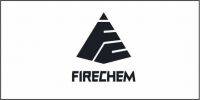 In the ever-volatile fabric of our modern world—where the forces of nature and the consequences of human error often converge to produce large-scale crises—search and rescue (SAR) operations stand as a critical, life-saving pillar within the broader framework of disaster response. Whether confronting the fury of earthquakes, the surging tides of cyclones, the chaos of terrorist attacks, or the devastation of industrial accidents, SAR operations are the frontline defense between destruction and survival. These operations demand not only technological excellence and logistical agility, but also the raw courage and tactical discipline of thousands of responders who put their lives at risk to recover those trapped in rubble, drowning in floodwaters, or buried beneath smoke and flame. From multi-agency coordination to community-led initiatives, from satellite-guided rescue mapping to canine-assisted rubble searches, SAR in times of calamity has evolved into a highly specialized discipline—yet it continues to operate in the face of unpredictability, danger, and extreme time constraints.
In the ever-volatile fabric of our modern world—where the forces of nature and the consequences of human error often converge to produce large-scale crises—search and rescue (SAR) operations stand as a critical, life-saving pillar within the broader framework of disaster response. Whether confronting the fury of earthquakes, the surging tides of cyclones, the chaos of terrorist attacks, or the devastation of industrial accidents, SAR operations are the frontline defense between destruction and survival. These operations demand not only technological excellence and logistical agility, but also the raw courage and tactical discipline of thousands of responders who put their lives at risk to recover those trapped in rubble, drowning in floodwaters, or buried beneath smoke and flame. From multi-agency coordination to community-led initiatives, from satellite-guided rescue mapping to canine-assisted rubble searches, SAR in times of calamity has evolved into a highly specialized discipline—yet it continues to operate in the face of unpredictability, danger, and extreme time constraints.
Search and rescue operations are inherently time-sensitive. The “Golden Hour” or “Platinum Ten Minutes” are more than medical idioms; they dictate the urgency with which SAR units must mobilize, especially when structural collapses, flash floods, or fires render access to victims difficult. The mission begins with assessment and reconnaissance—often carried out by aerial drones, helicopters, and satellite feeds—to determine the scale of the disaster, identify survivor clusters, and mark critical access points. Ground teams are then deployed with varied specializations: urban search and rescue (USAR) for building collapses, maritime SAR for floods and tsunamis, mountain rescue for landslides or avalanches, and CBRN (Chemical, Biological, Radiological, and Nuclear) response units for industrial or terror-based hazards.
The effectiveness of these operations hinges on pre-established Incident Command Systems (ICS), which ensure role clarity and inter-agency coordination across fire services, civil defense, military units, police, medical teams, utility providers, and volunteer groups.
The sophistication of SAR operations today lies in their layered response structure. First responders are trained not only to execute rescues but to make critical decisions under duress—whether it’s ventilating a fire-choked corridor or triaging victims amidst a collapsed metro tunnel. In large-scale disasters like the 2001 Gujarat earthquake or the 2023 Turkey-Syria quake, international SAR teams brought in ground-penetrating radar, fiber-optic cameras, seismic sensors, and search dogs to locate and extract survivors buried deep within debris. These advanced tools, combined with traditional methods like shoring, cribbing, and manual excavation, enable multidisciplinary teams to work in tandem even when infrastructure is decimated. Every minute in such operations is governed by a principle of calculated urgency, as secondary collapses, gas leaks, or aftershocks may follow the primary event.
Another vital element is the role of communication systems—both human and technological. Real-time information sharing through radio networks, satellite phones, or digital apps helps prioritize rescue zones and deploy manpower and equipment efficiently. Coordination is key. Unified command structures under frameworks like the National Incident Management System (NIMS) or UN’s INSARAG (International Search and Rescue Advisory Group) ensure that national and international teams operate under common objectives, terminologies, and procedures. In India, the National Disaster Response Force (NDRF), supported by State Disaster Response Forces (SDRF), has developed specialized SAR battalions with equipment such as inflatable boats, cutting tools, life detectors, and emergency medical kits. These teams have demonstrated high-impact performance during calamities like the Kerala floods, Uttarakhand cloudbursts, and the Morbi bridge collapse, emphasizing the importance of trained, pre-positioned personnel and assets.























































